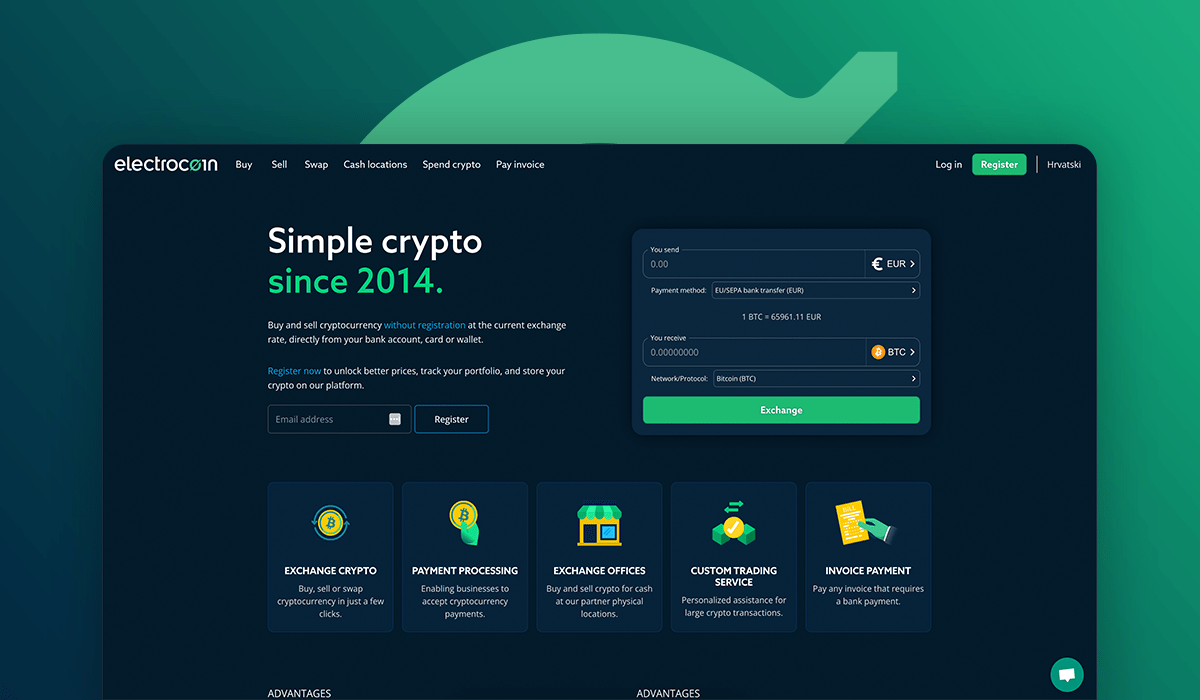Table of Contents
- What Exactly Is Staking?
- Why Is Staking Gaining Such Significant Attention?
- Are There Any Risks Involved in Staking?
- Why Is CHO Token a Hidden Gem for Crypto Staking?
- More Lucrative, Transparent, and Reliable Than Ever: Key Benefits of Staking CHO Today
- Conclusion
As May comes to a close, the cryptocurrency market is trending upward, leading many to anticipate the imminent arrival of the long-speculated crypto summer. With the next bull run taking shape, individuals are increasingly exploring diverse methods to profit from digital assets.
One of the most favored and convenient avenues for earning passive income from crypto is staking, which offers much higher interest rates and rewards compared to traditional financial institutions. Recent data indicates that as of 2024, crypto staking has evolved into an industry exceeding $322 billion, fueled by the growing adoption of digital assets and the maturation of the crypto market.
Currently, there are over 180 cryptocurrencies available for staking. However, a particularly exciting option has recently captured the attention of the crypto community, promising to elevate staking rewards to unprecedented levels. For nearly two months, leading crypto influencers, traders, and analysts have been eagerly awaiting the launch of Choise.ai's innovative staking platform, which debuted just recently, allowing holders of the ecosystem’s native CHO token to partake in its lucrative multi-million-dollar B2B revenue stream with staking returns surpassing 100%.
But before we delve into the unparalleled potential of this development, let’s examine the fundamentals of cryptocurrency staking and explore why CHO presents an exceptional opportunity for maximizing profits through this form of passive income.
What Exactly Is Staking?
In essence, staking is a process used by certain cryptocurrencies that operate on a Proof-of-Stake (PoS) model. PoS serves as an energy-efficient alternative to the Proof-of-Work (PoW) system employed by Bitcoin.
Staking crypto can be likened to putting your digital assets to work. This involves locking up a portion of your crypto holdings to support the operations and security of a blockchain network.
By staking your crypto, you deposit your coins into the network as a form of collateral, which helps maintain the blockchain's integrity and functionality. In return, you gain the chance to participate as a validator, verifying transactions and adding new blocks to the blockchain.
Why Is Staking Gaining Such Significant Attention?
Staking offers an excellent way to earn passive income. By committing your resources to maintain the integrity of a blockchain network, you are compensated with staking rewards, expressed as the annual percentage yield (APY). The APY you receive generally depends on the amount of crypto you stake and the duration of your commitment, which is akin to earning interest in a savings account.
Consider the Ethereum (ETH) network, which is the most popular PoS staking coin, boasting over $120 billion in staking market capitalization. When you stake your ETH, you might be chosen to validate transactions and propose new blocks. If the block you propose is accepted and added to the blockchain, you earn additional ETH as a reward.
Currently, the average staking APY for Ethereum ranges between 4-5%. To put this in perspective, a 5-7% return on investment (ROI) from low-risk stocks is considered good. But, with ETH staking, this return can be entirely passive, requiring minimal effort to earn. Additionally, you don’t have to pay high fees to brokers and other intermediaries, which typically eat into your ROI.
Are There Any Risks Involved in Staking?
However, the 4% APY for ETH staking signifies a considerable decline from the 9% returns observed in late 2021. This shift occurred following Ethereum's transition from its initial PoW system to PoS in 2022, known as the Merge, and the subsequent Shapella upgrade.
Staking rewards are influenced by several factors, including on-chain activity, token demand, crypto prices, and the number of validators. An increase in validator nodes generally leads to a dilution of staking returns. This is exactly what happened following the Shapella upgrade that eliminated lockup periods for staking ETH, attracting more investors to create validator nodes. Consequently, the number of validators has nearly doubled within five months, which contributed to the reduction in Ethereum staking yields in recent quarters.
Although the market shows signs of recovery after the prolonged crypto winter, enhancing both on-chain metrics and demand for major cryptocurrencies, inherent price volatility remains another substantial risk in staking. This volatility is particularly impactful as staking rewards are usually paid in the same cryptocurrency that is staked.
If you stake ETH and its value plummets due to market fluctuations, as it recently did from almost $3,700 to just below $2,900 within a month, the value of your staking rewards also decreases. Thus, even if the quantity of coins earned as rewards remains stable, their market value can drop, affecting the real ROI. Moreover, withdrawing and selling staked assets during periods of high volatility can lead to additional penalties or a loss of staking rewards.
Why Is CHO Token a Hidden Gem for Crypto Staking?
The reduction in APY for Ethereum staking following the Merge has prompted many investors to seek alternatives, particularly those offering higher returns. Staking rewards vary depending on the blockchain, and among the top 20 PoS coins by staking market cap, Celestia (TIA), Polkadot (DOT), Internet Computer (ICP), Cosmos (ATOM), Saga (SAGA), and Injective (INJ) stand out for offering double-digit APYs, ranging from 10% to over 19%.
Although these assets are currently trading at relatively affordable prices, savvy investors often explore the market further to identify even lower-priced staking cryptocurrencies with strong fundamentals, thereby establishing a solid foundation for potential growth and enhanced returns. The CHO token is one such golden opportunity for effortless wealth.
Previously, CHO served as a cornerstone of the Choise.com B2C platform, now part of the rapidly evolving Choise.ai ecosystem. Through a special Charism protocol, staking CHO enabled participants to receive APYs of up to 28%. Additionally, CHO stakers could easily sell their locks in the form of veCHO NFTs, an exciting possibility known as liquid staking in cryptocurrency circles.
Following the merger of Choise.com with the B2B company Vault, founded by the same team, to form Choise.ai, staking rewards for CHO are set to receive a significant boost. The project emphasizes a community-first approach, ensuring its loyal supporters are the primary beneficiaries of its growth efforts. Consequently, Choise.ai has initiated the launch of a special incentive program with up to 20% of Vault’s revenue allocated to reward CHO token stakers with the newly launched VLT token.
Despite being operational for less than a year, Vault has already established a strong reputation in the burgeoning enterprise niche, building a solid track record. The company's intrinsic value – creating white-label products and APIs for the swift, cost-effective, and smooth launch of digital and crypto banks – has resonated with current market demand, resulting in over 50 signed contracts worth over $20 million.
If market conditions remain favorable, Vault stands a great chance of achieving $60 million in revenue by the year’s end and potentially surpassing the $180 million milestone by 2025. This growth could significantly enhance the value of CHO staking, allowing users to increase their passive income through the recently introduced CHO/VLT staking platform.
More Lucrative, Transparent, and Reliable Than Ever: Key Benefits of Staking CHO Today
From now on, CHO holders can stake their holdings on Binance Smart Chain (BSC) with lock-up periods ranging from three months to one year. The APY starts at 30% and can reach an impressive 100%.
Industry insiders suggest that these returns could even reach 150%, as the project team exclusively offers hidden community tips for enhanced earnings via their social media channels, which is brimming with various contests providing opportunities to grow one’s CHO stash.
Overall, staking CHO implies several advantages over other existing options, primarily due to the implementation of VLT:
-
Stable growth trajectory: As Vault’s revenue consistently increases, the amount of VLT allocated for staking rewards will also grow.
-
Fixed price of VLT: VLT maintains a base price of 1 USDT, protecting it from market volatility and preserving the value of earned rewards.
-
Fair distribution: The amount of VLT you receive depends not only on the quantity and duration of your stake but also on your overall engagement with the CHO token. All CHO holders, categorized from early buyers to current owners and potential investors, will receive proportionate rewards, with priority given to longer-standing supporters.
-
User-centric approach: Initially, staking CHO for VLT will be exclusively available to the CHO token community, ensuring they get the first dibs on benefits from Choise.ai’s multimillion-dollar B2B earnings.
With seven years of expertise in the crypto industry, the team at Choise.ai has developed a reliable and profitable staking mechanism that addresses many common issues. As the utility of the CHO token continues to expand, enhancing its market value and appeal, staking CHO for VLT not only offers increased APY but also the potential for profit from the token’s price growth.
Conclusion
Crypto staking has emerged as a compelling method for earning passive income while contributing to the blockchain ecosystem. Its primary advantage is offering a more stable return compared to speculative investments, making it a less risky way to profit from digital assets. However, staking is not without risks, necessitating thorough due diligence when it comes to selecting reliable platforms for maximizing returns and minimizing pitfalls.
Projects like Choise.ai provide significant advantages for those looking to capitalize on staking opportunities. By leveraging the synergy between CHO and VLT tokens, Choise.ai accommodates both novice and experienced stakers, offering APYs up to 150%. With CHO trading at a price 18 times lower than its all-time high of $1.38, the potential for growth is substantial. This, coupled with the ecosystem's robust staking mechanisms, makes CHO staking a highly attractive form of generating passive income in the crypto market.
Disclaimer: This article is provided for informational purposes only. It is not offered or intended to be used as legal, tax, investment, financial, or other advice.
Investment Disclaimer












